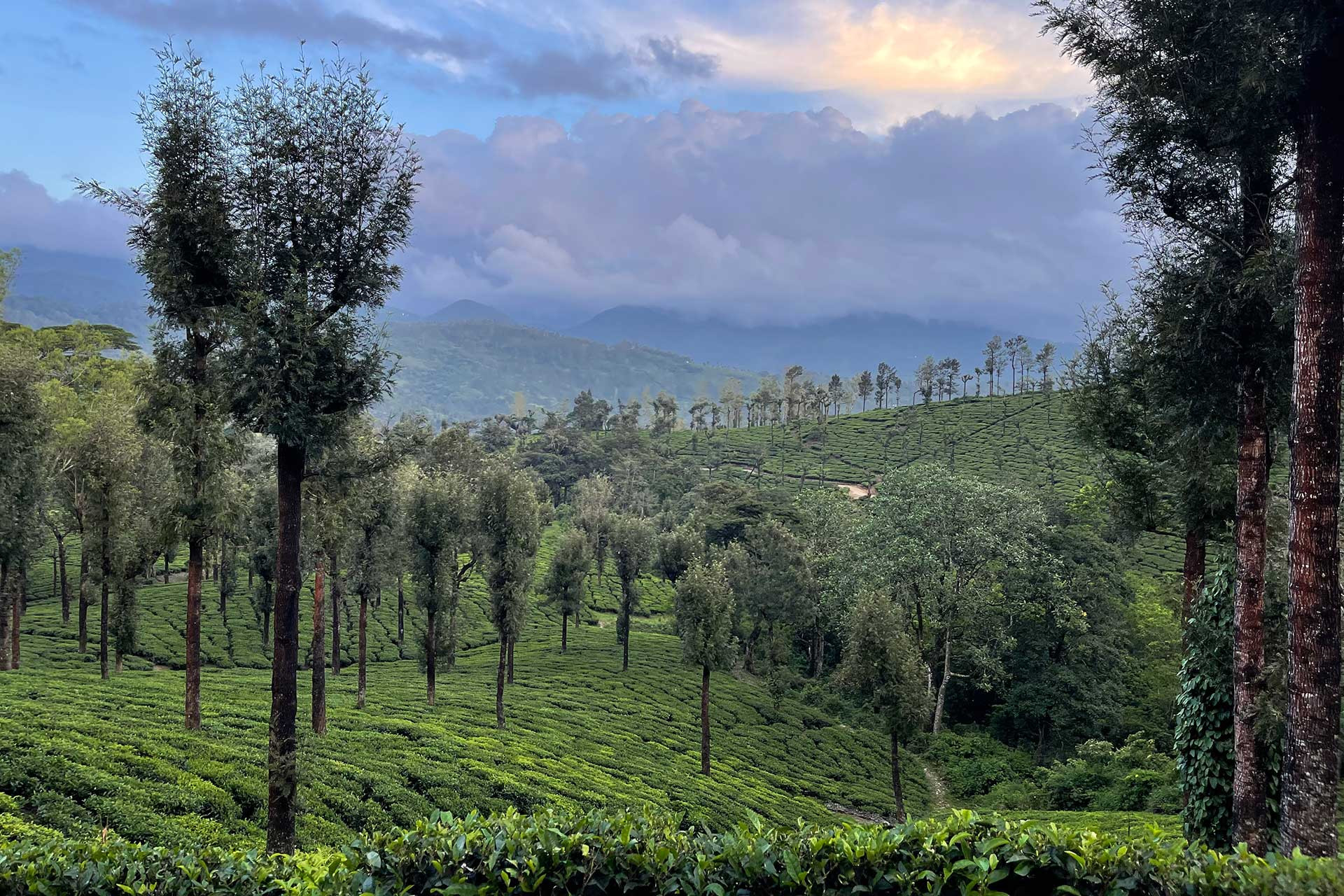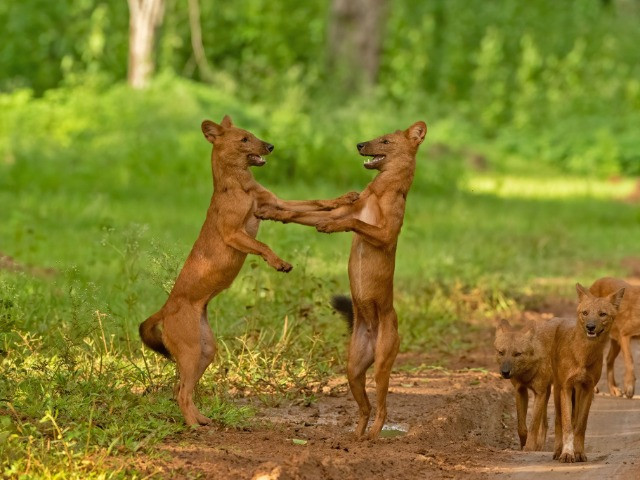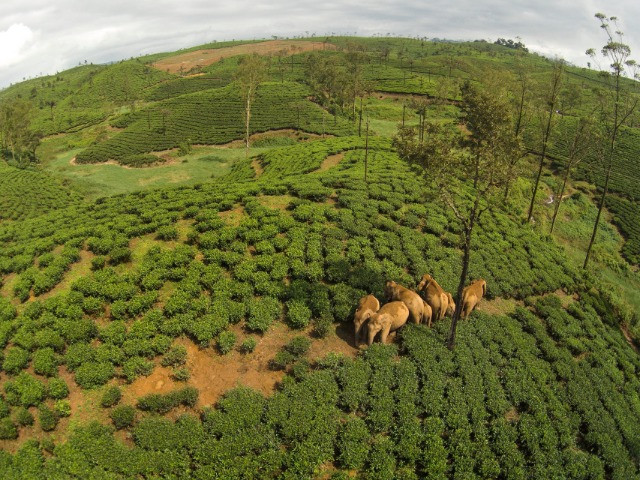The Valparai plateau is nestled amidst the majestic Anamalai hills of the Western Ghats. Once part of its vast, contiguous forests, today, it is an intricate matrix of tea, coffee, and cardamom plantations, encompassed by the rainforests of the Southern Western Ghats. On my way to Valparai, on a cool August evening, I was greeted by glimpses of the endemic Lion-tailed Macaque and Nilgiri Tahr—locally abundant animals that are a rare sight elsewhere in the Western Ghats.
At first, walking through the tea estates of Valparai appeared to be an uneventful exercise. I was soon convinced otherwise when a Stripe-necked Mongoose scurried past and disappeared into a nearby thicket. As the sun set in the western skies, the place came alive with the evening chorus of a thousand birds. The tea plantation stretched for miles in all directions, but there were multiple patches of forests within its perimeter. Among the dense foliage of these forest patches alone, I managed to spot over 20 species of birds, rumbustious troupes of Nilgiri Langurs, and some massive Indian Gaurs.
It is common knowledge that a wide diversity of wild animals like langurs, sambars, gaurs and even elephants reside in a tea–forest mosaic-like Valparai. But what of the large, potentially dangerous carnivores like tigers and leopards? To the uninitiated, it would seem like the best place to see such carnivores would be on a safari in a national park or sanctuary. Curiously, the tea estates of Valparai are home to the Asiatic Wild Dog, also known as Dhole, a large carnivore that typically lives in large social groups (packs).
Dholes are highly social animals and live in packs of 2–25 individuals. They are very vocal and use sounds to communicate with each other during hunts and for inter and intra-pack interactions. They are known for their unique whistling sounds, earning them the moniker, ‘whistling dogs’. With an estimated 1000–2000 mature individuals remaining in the wild, they are listed under the ‘Endangered’ category by the International Union for Conservation of Nature (IUCN). Dholes are particularly vulnerable to human disturbances because they are diurnal animals, active during the daytime and crepuscular hours.
For many of us, it may be hard to fathom that an apex carnivore like the Dhole (called Chennayi in Tamil) lives in tea estates. Like people living in shared human–wildlife landscapes having to navigate multiple challenges, ostensibly, so do the Dholes. I mainly wanted to visit Valparai to experience firsthand these large carnivores in a landscape dominated by people and plantations.
I connected with local researchers and photographers to gather information about where the Dholes had been seen before and discovered that some of these locations were swampy areas with water bodies and substantial Sambar populations. Dholes are known to love water bodies, and the Sambar Deer is the most common prey species across their distribution range. Interestingly, Dholes also used relatively open spaces in the middle of plantation estates to rest during the day, even in the presence of plantation workers. I heard from a local source that a resident pack had also reproduced in the same place a year ago and was now 20 individuals strong.
You may also like to read
My visit to Valparai revealed that not only were Dholes living within these tea estates, but they were also thriving. Dhole packs here were hunting wild prey, making dens and giving birth to pups, all while sharing space with a large human population, suggesting that tea estates adjoining rainforests have the potential to support resident Dhole populations, at least in smaller packs and numbers. These packs outside protected areas are vital to maintaining connectivity between the larger populations inside national parks and sanctuaries.
India supports the largest population of Dholes across the species’ range, and the Western Ghats landscape is a globally crucial population stronghold. The landscape, unfortunately, has also experienced a significant loss of forest habitats in the last few decades. Loss of primary habitat typically leads to local extinctions of forest-dependent species like the Dhole. Secondary habitats, like tea estates amidst unprotected forest patches, will become increasingly important to maintain connectivity between Dhole populations in fragmented landscapes.
But what exactly are the factors within these tea–forest mosaics that enable the presence of Dholes? Are there areas that they avoid? And why? Can Dhole populations persist in such tea plantations in the long term? Can agroforest mosaics with coffee, tea and cardamom plantations serve as viable conservation landscapes for the species? These and many more questions await dedicated scientific studies, even as the Dholes of Valparai continue to share spaces with humans. Although I visited many locations frequented by Dholes, I was unable to see them during my short visit. I remain eager to discover more about the fascinating lives of the Chennayi in Valparai’s chai plantations.








